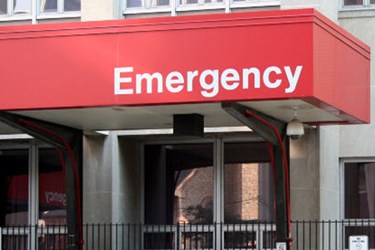Opioid Addiction, Mental Health Issues Increasing ED Visits

By Christine Kern, contributing writer

As the opioid epidemic spreads, healthcare providers are faced with greater pressures for treatment.
Opioid use disorders have reached epidemic proportions across the U.S., putting greater pressure on healthcare providers to respond. Many primary care physicians have been reluctant to enter the fight against opioids for a variety of reasons, leaving the brunt of the effort to overtaxed and understaffed Emergency Departments nationwide.
Now, a new study from the New Jersey Health Association has found patients suffering from mental health and substance use disorder needs comprise nearly half of the growth in hospital emergency room cases in New Jersey hospitals, far outpacing the overall growth in emergency department use. This provides startling insights into the dire reality of this crisis.
In August, the U.S. Department of Health and Human Services (HHS) recognized the critical nature of the epidemic, awarding $53 million to help address it through improved access to treatment for opioid use disorders to reduce opioid related deaths, and strengthened drug misuse prevention efforts. “The epidemic of opioid use disorders involving the non-medical use of prescription opioid pain relievers and the use of heroin has had a devastating impact on individuals, families and communities across our nation,” said Substance Abuse and Mental Health Services Administration (SAMHSA) Principal Deputy Administrator Kana Enomoto.
In May, Dr. Scott Shapiro, president of the Pennsylvania Medical Society raised alarms over the epidemic, stating, “Pennsylvania is known as the State of Independence, but when it comes to opioids, Pennsylvania is rapidly becoming the state of dependence.”
According to Shapiro, Americans are only 4.5 percent of the world’s population yet consume 80 percent of the global opioid supply. In Pennsylvania last year, 10.3 million opioid prescriptions were filled for pain-killers including Oxycontin, Percocet, Demerol, and Vicodin — nearly one prescription per resident of Pennsylvania.
While many in government and leadership positions are urging the immediate attention to this crisis, primary care physicians are resistant. Despite the fact the federal government embarked on an effort last year to double the number of doctors certified to treat addiction with buprenorphine, a drug shown to curb opioid cravings in most patients, less than 1 percent of primary care doctors are now certified.
Part of the failure is due to traditional training and treatment approaches. Until the 2000 passage of the Drug Abuse Treatment Act, the American medical system approached substance abuse disorders by encouraging abstinence and directing patients to treatment centers, mental health counselors, or 12-step programs like Narcotics Anonymous.
The resulting unpreparedness of most primary care physicians to appropriately address addiction issues has pushed many addicts into Emergency Departments instead. The NJHA study found 45.7 percent of new ED cases in 2015 included a mental health or substance use disorder diagnosis. And while overall ED visits increased 3.8 percent, ED visits with a mental health or substance abuse diagnosis increased 10.1 percent.
“We know that treating people in a mental health crisis in the emergency department can place stress on the patient; it’s simply not the right setting to handle their complex needs,” said Betsy Ryan, president and CEO of NJHA. “At the same time, it places increased strain within the emergency department, adding to overcrowding, long waits and increased healthcare costs.”
